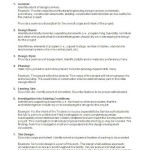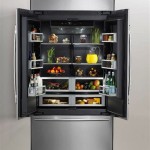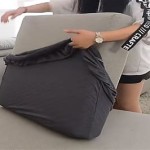Car Interior Vinyl Wrap: A Comprehensive Guide
Vinyl wrapping has become increasingly popular in recent years, offering a cost-effective and versatile alternative to traditional paint jobs for car exteriors. However, many car enthusiasts may not be aware that vinyl wrapping can also be effectively applied to car interiors, transforming the look and feel of the cabin. This guide delves into the benefits, applications, and considerations involved in car interior vinyl wrapping.
Benefits of Car Interior Vinyl Wrap
Car interior vinyl wrap offers a range of advantages over traditional interior customization methods, making it an attractive option for many car owners. Some of the key benefits include:
1. Customization and Style
Vinyl wraps come in a vast array of colors, textures, and patterns, allowing for endless customization possibilities. Whether you're aiming for a sleek and modern look, a bold and vibrant aesthetic, or a unique and personalized touch, vinyl wrapping can help you achieve your desired style. You can even opt for carbon fiber-textured vinyl to create a sporty and high-performance look.
2. Durability and Protection
Vinyl wraps are incredibly durable, offering excellent protection against scratches, scuffs, and stains. This is particularly beneficial in high-wear areas like the dashboard, door panels, and center console. The vinyl acts as a barrier, shielding the underlying material from everyday wear and tear, preserving the original condition of the interior.
3. Reversible and Removable
Unlike paint, vinyl wraps are removable and repositionable. If you change your mind or decide to restore the original interior, you can easily remove the wrap without damaging the underlying surfaces. This flexibility allows for experimentation and customization without permanent alteration. It also allows for easier removal of dust, dirt, and other contaminants, making cleaning simpler than traditional interior materials.
4. Cost-Effective
In comparison to traditional reupholstery or custom interior modifications, car interior vinyl wrapping often offers a more budget-friendly option. The cost of materials and installation is generally lower, making it a practical choice for those looking to enhance their car's interior without breaking the bank.
Applications of Car Interior Vinyl Wrap
Car interior vinyl wrap can be applied to various surfaces, providing a comprehensive solution for transforming the look and feel of the cabin. Some of the most common applications include:
1. Dashboard Wrapping
The dashboard is often the focal point of the car's interior, and vinyl wrapping can give it a new lease on life. From covering scratches and fading to creating a smooth and polished look, dashboard wrapping can significantly enhance the overall aesthetic of the interior.
2. Door Panel Wrapping
Door panels are prone to wear and tear, especially in areas like the armrests and door handles. Vinyl wraps can effectively protect these areas, while also adding style and customization. The wrap can complement the dashboard or create a contrasting look, depending on your preferences.
3. Steering Wheel Wrapping
The steering wheel is a high-touch area that can often get worn or faded over time. Vinyl wrapping can restore the original look and feel of the steering wheel, while also offering a more comfortable grip and improved aesthetics. You can opt for leather-textured vinyl to create a luxurious feel.
4. Center Console Wrapping
The center console is often a cluttered and high-wear area in a car's interior. Vinyl wrapping can help protect the surface from scratches and spills while creating a cohesive and unified look. You can wrap the entire console or specific areas, such as the cup holders or gear shifter.
5. Accent Pieces
Vinyl wrap can be used to accentuate individual elements of the interior, such as the air vents, door handles, or window switches. This can create a subtle and stylish look that complements the overall design of the cabin.
Considerations for Car Interior Vinyl Wrap
While car interior vinyl wrapping offers numerous benefits, there are some factors to consider before embarking on this project. These include:
1. Material Selection
Vinyl wraps come in a wide range of materials, each with its own characteristics. Consider the level of durability, texture, and finish required for your specific application. For example, if you're wrapping a high-wear area like the steering wheel, you'll need a durable and textured vinyl that offers a good grip.
2. Preparation
Proper preparation is crucial for a successful and long-lasting vinyl wrap. The surface to be wrapped should be clean, dry, and free of any debris or contaminants. This may involve sanding, cleaning, and degreasing the surface to ensure optimal adhesion.
3. Installation
While installing vinyl wrap can be DIY-friendly, it's essential to have the right tools and techniques. A heat gun or hairdryer is often used to soften the vinyl and facilitate application. Professional installation ensures a smooth and even application, minimizing bubbles and wrinkles.
4. Maintenance
Vinyl wraps require minimal maintenance but should be cleaned regularly with mild soap and water. Avoid using harsh chemicals or abrasive cleaners that can damage the vinyl. Proper maintenance will extend the life of your vinyl wrap and preserve its appearance.

Xpo Red Dry Carbon Interior Only Vinyl Wrap Vvivid The

Black Car Interior Leather Grain Texture Vinyl Wrap Sticker 3m X 1 5m Ab

3d Car Interior Carbon Fiber Vinyl Wrap Sticker Dashboard Trim Panel Roll Decal Com

Interior Vinyl Car Wrap Wannaberacer Wraps

Walbest High Glossy Wood Grain Vinyl Wrap Sticker Decal Car Internal Wraps Self Adhesive Diy Waterproof Roll Without Bubble 100x30cm 39 3x11 8in Com

How To Wrap Your Interior Trim With 3m Carbon Fiber Vinyl 4 Steps S Instructables

Car Interior Accessories Panel Black Glossy Carbon Fiber Vinyl Wrap 7d Sticker

Interior Vinyl Car Wrap Wannaberacer Wraps

Car Interior Wrap Examples Vinyl Wrapping

Car Motorcycle 7d Carbon Vinyl Wrap Interior Temu








